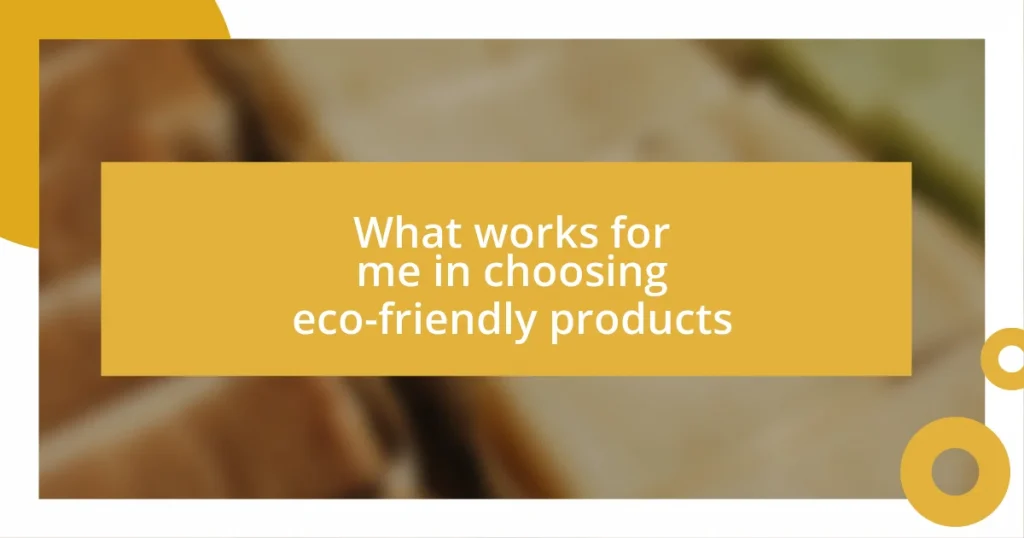Key takeaways:
- Community gardens foster social connections, promote education, and enhance mental wellness, creating a sense of belonging among participants.
- Identifying suitable locations is crucial, with factors like sunlight, accessibility, water supply, soil quality, and community interest playing key roles.
- Establishing maintenance routines and promoting community engagement, such as potlucks and workshops, enhance teamwork and strengthen local relationships.

Understanding community gardens
A community garden is more than just a plot of land filled with vegetables and flowers; it’s a vibrant hub of social life and collaboration. I’ll never forget the first time I walked into mine. The air was filled with laughter as neighbors exchanged gardening tips and shared stories. It struck me that these gardens can transform not only the land but the relationships in the community. Have you ever wondered how sharing a simple gardening task can foster such deep connections?
What’s fascinating is how community gardens can serve as a powerful tool for education. I remember watching children, wide-eyed and curious, as they planted seeds with their families. It brought back memories of my own childhood, where my grandmother taught me the magic of growing my own food. These experiences not only teach valuable skills but also instill a sense of responsibility towards the environment. Isn’t it amazing how plants can unite people and teach them about sustainability?
Additionally, community gardens promote mental wellness and provide a sense of belonging. For those of us who may feel isolated, getting involved in a shared gardening space can alleviate loneliness. I often found solace in the rhythm of planting and weeding after a long day. Isn’t it interesting how something as simple as digging in the dirt can ground us and provide a break from the chaos of life?

Identifying suitable locations
When it comes to finding the perfect spot for a community garden, location is key. I learned this firsthand during my own search when I stumbled upon a vacant lot nestled between two apartment complexes. It was like finding buried treasure! The potential for transforming that space into a lush, green community hub was immediately evident to me.
Consider these factors when identifying suitable locations for your garden:
- Sunlight: Look for areas with at least six hours of direct sunlight daily. This will ensure your plants thrive.
- Accessibility: Ensure the site is easily reachable for community members of all ages and abilities.
- Water Supply: Proximity to a water source is crucial for maintaining healthy plants. I remember dragging hoses across a parking lot, and it was never fun!
- Soil Quality: Test the soil for contaminants and nutrients. Poor soil can make or break your garden’s success.
- Community Interest: Engage with your neighbors to gauge interest and get everyone on board. I’ve found that enthusiasm can ignite positive changes in a neighborhood!

Gathering community support
Gathering community support is a crucial step in establishing a successful community garden. I remember hosting my first informal meeting at a local café, where I reached out to neighbors and fellow gardening enthusiasts. The warm buzz of conversation ignited a sense of excitement, and I realized that many shared my vision of cultivating not just plants but also friendships. It was heartening to see others eager to contribute their time and skills.
Next, I created a social media group to extend our outreach. This platform allowed us to share ideas, post updates, and encourage those who were initially hesitant to get involved. Surprisingly, one post led to a group of children from the local school reaching out, wanting to volunteer and learn. It felt rewarding to see younger generations taking interest in growing their own food. Have you ever experienced that rush of joy when a simple connection blossoms into something more significant?
Lastly, I organized a weekend clean-up event to physically prepare the chosen space for gardening. As we cleared debris together, laughter and stories filled the air. It was a beautiful reminder that, through teamwork, we were creating not just a garden but a tighter-knit community. I vividly remember how, at the end of the day, the smiles exchanged between neighbors felt like the first fruits of our shared effort.
| Method | Benefits |
|---|---|
| Informal Meetings | Encourage initial interest and gather diverse perspectives |
| Social Media Outreach | Enhances communication and attracts a wider audience |
| Community Events | Fosters teamwork and strengthens relationships |

Planning your garden layout
Creating a garden layout is like crafting a blueprint for a vibrant community space. I remember standing in that vacant lot, envisioning rows of vegetables and flowers dancing in the breeze. It struck me how important it was to think about pathways, sunlight, and which plants would thrive where. Have you ever mapped out a project and felt that sudden rush of clarity? That’s exactly how I felt when plotting out my garden.
When planning, consider the wind patterns and how they affect your layout. I mistakenly placed my lettuce too close to the edge once, exposing them to harsh winds that stunted their growth. That little misstep taught me the value of placing fragile plants in sheltered spots or behind taller crops. Ensuring your garden has a protective layout not only enhances the visual appeal but also boosts productivity. It’s a lesson I carry with me—strategic planning can make all the difference.
Don’t overlook the need for communal spaces as well! In my garden, I added a small seating area to encourage neighbors to gather, chat, and share gardening tips. It transformed that spot into a hub of connection and creativity. Imagine enjoying a morning coffee surrounded by the fruits of your labor—doesn’t that sound wonderful? Thoughtful layout design can change the way a garden functions, turning it into a true community sanctuary.

Choosing the right plants
Choosing the right plants for your community garden can feel a bit overwhelming, but it’s also one of the most fun parts of the process. When I first started, I made a list of plants that everyone expressed interest in growing, and to my surprise, it turned out that tomatoes were a favorite among many. I remembered the joy of picking juicy tomatoes from my childhood garden, and I wanted to replicate that experience for others. Isn’t it amazing how certain plants can evoke such vivid memories?
I also learned the importance of selecting plants based on our local climate and soil type. Initially, I had dreams of cultivating exotic flowers that would dazzle the neighborhood. But when I consulted a local gardening expert, it became clear that opting for hardy perennials was a more practical choice. I felt a mix of frustration and relief at that moment. It’s easy to get caught up in the allure of flashy plants, but the goal should be sustainability and success. Wouldn’t you rather see thriving plants than watch your hopes wilt?
Moreover, I encouraged fellow gardeners to choose plants they personally love or want to learn more about. It creates a deeper connection to the garden and promotes ongoing interest. I remember a neighbor who was passionate about herbs, and her enthusiasm inspired a whole section dedicated to basil, mint, and rosemary. That simple addition transformed our space into a delightful aromatic haven, and I can still recall the warm scent wafting through the air. Isn’t it inspiring how one person’s passion can influence an entire community’s gardening journey?

Establishing maintenance routines
Establishing a maintenance routine for our community garden was as crucial as the initial planning stages. I remember those early days when we gathered to discuss who would tend each section of the garden. We decided on a rotating schedule, which not only ensured that all areas received attention but also fostered a sense of ownership among the volunteers. How often have you felt more invested in something when you had a hand in its upkeep?
One of the most effective practices we implemented was a weekly check-in. I still remember the excitement of our Sunday morning meetings—everyone sharing updates and challenges while enjoying fresh coffee. These gatherings became a bonding experience; we swapped tips and even organized mini-workshops on composting and pest management. It felt fulfilling to witness our collective knowledge grow while we nurtured our plants.
As the seasons changed, so did our maintenance routines. I quickly learned that in the cooler months, we needed to adjust our efforts. Adding mulch became a game changer! It helped retain moisture and protect the roots from frost. I can’t help but smile remembering the warmth of camaraderie when my neighbors joined me for a mulching day. Reflecting on our shared experiences made it clear: consistent maintenance routines are not just about keeping the garden thriving; they also cultivate community spirit.

Promoting community engagement
Promoting community engagement within the garden brought a sense of connection that I didn’t expect. When we organized our first community planting day, I was genuinely touched by the turnout. Neighbors I barely knew came with their kids in tow, ready to dig in and plant seeds together. Seeing everyone work side by side, planting not just vegetation but relationships, was incredibly heartwarming. Have you ever experienced that moment when strangers become friends through a shared goal?
To keep the momentum going, we established monthly potluck gatherings. Each member would bring a dish featuring ingredients from the garden, and as everyone tasted each other’s creations, I could feel the community spirit deepen. It became so much more than just about gardening; it was about sharing meals, stories, and laughter. At one potluck, I clearly recall a lovely elderly lady sharing recipes that had been in her family for generations. Doesn’t food have a way of bridging gaps and fostering conversations?
We also made it a priority to involve local schools and youth organizations. I initiated workshops for children, where they learned about planting and caring for the garden. Watching their faces light up as they planted seeds and marveled at the growth was pure joy for me. One little girl even asked if she could name the first cucumber she harvested, and seeing her pride made me think: how can we inspire the next generation to cherish nature and community? It’s experiences like these that made me realize how gardening can unite us, nurture curiosity, and cultivate friendships that last far beyond the harvest season.















